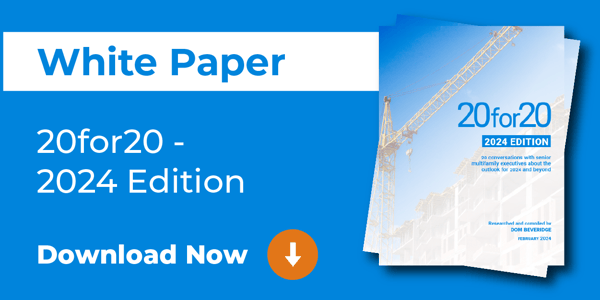
There has been a great deal of talk about multifamily revenue management over the last few days. Last Friday, the Department of Justice's (DoJ) long-anticipated "algorithmic pricing" lawsuit affecting multifamily revenue management dropped.
Since then, I have been involved in many discussions about this news, particularly the central problem I see with these lawsuits: the allegations are simply false. What has surprised me somewhat through conversations over the last few days is that good-faith actors in the industry do not understand the gap between the allegations and the reality of how the technology works.
The DoJ lawsuit alleges that by using certain types of revenue management software, competing communities are effectively colluding with one another to fix prices in the market. There are endless reasons to disbelieve this claim, as we set out in great detail in a white paper released a year ago. But the core problem is that it is simply not how the software works. This article explains the disconnect by using one of the examples that people have been using to characterize RM (wrongly) as price-fixing behavior.
The "Note-Passing" Example
Imagine if two people hired a third person to pass notes between them, where the contents of the notes were nonpublic information used to help them cooperate and influence a market. That activity would be illegal, and the DoJ lawsuit alleges that something similar is happening in multifamily. If properties are using the same revenue management software and that software uses confidential nonpublic data, the logic goes, the software must be "passing notes" between competitors in the market.
It is easy for a lawyer or a journalist to make that sound plausible because it is true that nonpublic competitor data is involved in the process, and it is true that multiple people are using the same piece of software to set prices. But none of that means that collusion is going on, and in the case of multifamily revenue management, it definitely isn't.
Let's translate what is actually happening into the same note-passing analogy. In the case of revenue management, our competitors each have one note that nobody else can see but them. Each note contains many pieces of information they use to set prices, almost all of which are about each company's own data (my property's expirations, current prices, strategic objectives, etc.).
One of the items on the note is a market composite, an average of prices in the local market, mostly made up of public domain data. Everybody knows what price everyone else charges in the market, so there is no problem with people collecting it and using it for analysis.
Where Signed Lease Data Comes In
One of the steps in preparing that composite is to adjust it based on some signed lease data—that is intended to help in situations when operators apply discounts to asking rents, which is a common leasing practice. We should note that that adjustment can only ever be downward (if the price of a signed lease is different from advertised, it is practically always lower), so its presence in the composite can only reduce recommended prices rather than increase them.
It is also important to note that signed lease data is, by definition, historical. Pricing, on the other hand, is forward-looking. So the subset of the market data that is confidential cannot correspond to the period to which the pricing recommendations apply.
To recap:
- The signed lease data is an ingredient in a market pricing composite, which mostly comprises other types of data.
- The composite is opaque, i.e., there is no way to know whose data it is; other than that, it usually comes from properties in the same submarket.
- The composite mostly comprises public domain data, with signed leases used to remove some inaccuracy from the public data.
- The signed lease data is historical, so it cannot be directly applied to forward-looking pricing recommendations.
- The composite is one of many data points, none of which is visible to competitors.
So, back to our note-passing example. Each of these participants has their own note with many pieces of information on it, one of which happens to be a high-level piece of information about the market, which has, to an unspecified extent, been calculated using some signed lease data.
Participants have no way to pass their notes from one person to another. The software they use can only optimize on behalf of one property—it has no functionality to coordinate prices between multiple properties. Therefore, it is not true to say that collusion is going on.
Why this really matters
Multifamily operators and anyone with an interest in this matter need to understand this. It doesn't matter how many social media accounts, newspapers, or politicians you have heard saying landlords are colluding—they simply aren't.
The DoJ's rationale is to treat price collusion as a given. The complaint contains many quotes intended to sound bad in the context of its legal narrative. But the complaint provides no evidence of price-fixing, which is no surprise because it isn't happening.
The last article on this topic in these pages considered the big-picture implications of the DOJ proceeding in this way. If agencies can sue vendors based on rumors of how the software works that misunderstand or mischaracterize reality, then many technologies and even business models within our industry could find themselves in the crosshairs of regulators at any point in the future.
I will tackle this and related topics in greater depth with experts in a podcast series I plan to release in a few weeks (for updates follow Tech Talk with 20for20 wherever you get your podcasts). But in the meantime, any time you hear or see anybody describing price collusion as a fact in our industry, please make sure they understand that it isn't.
Photo by Mikhail Nilov on Pexels



